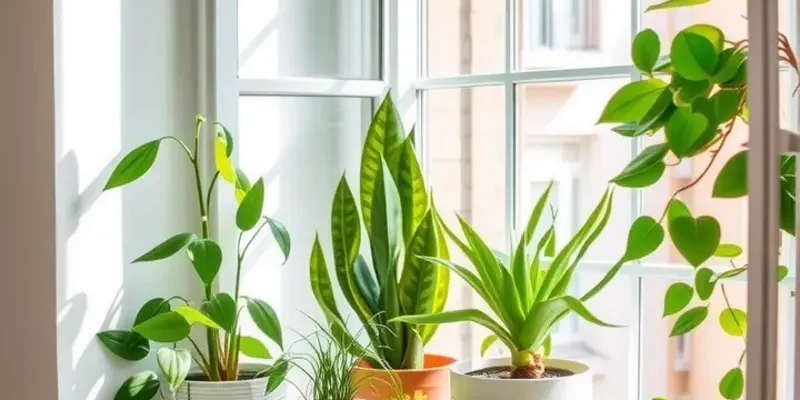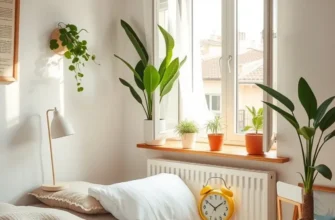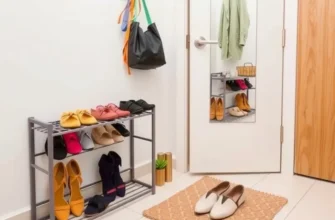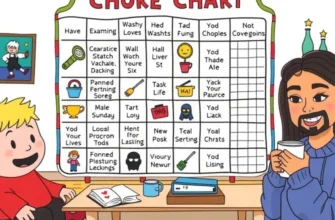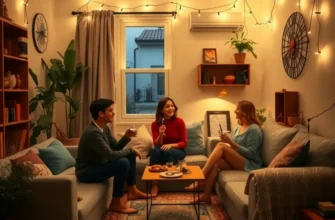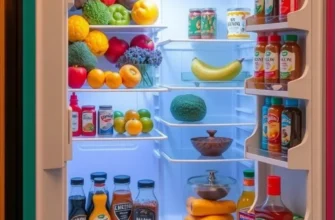If you’re a young renter adjusting to life in your snug apartment, you’re probably sifting through a collection of mismatched furniture, scouring Pinterest for décor inspiration, and pondering how to make this tiny space feel like home. Enter apartment plants—the magical green companions that can transform your living room into a mini-jungle (minus the mosquitoes). Aside from being a fun way to add character to your surroundings, plants can also boost your mood, improve air quality, and inspire those Instagram-worthy shots. So, whether you’re a couple looking to spruce up your love nest or a busy family seeking relaxation amidst the chaos, this guide will help you navigate the serene world of plant care. Grab your watering can, take a deep breath, and let’s embark on this leafy adventure together!
Choosing the Right Plants for Your Space
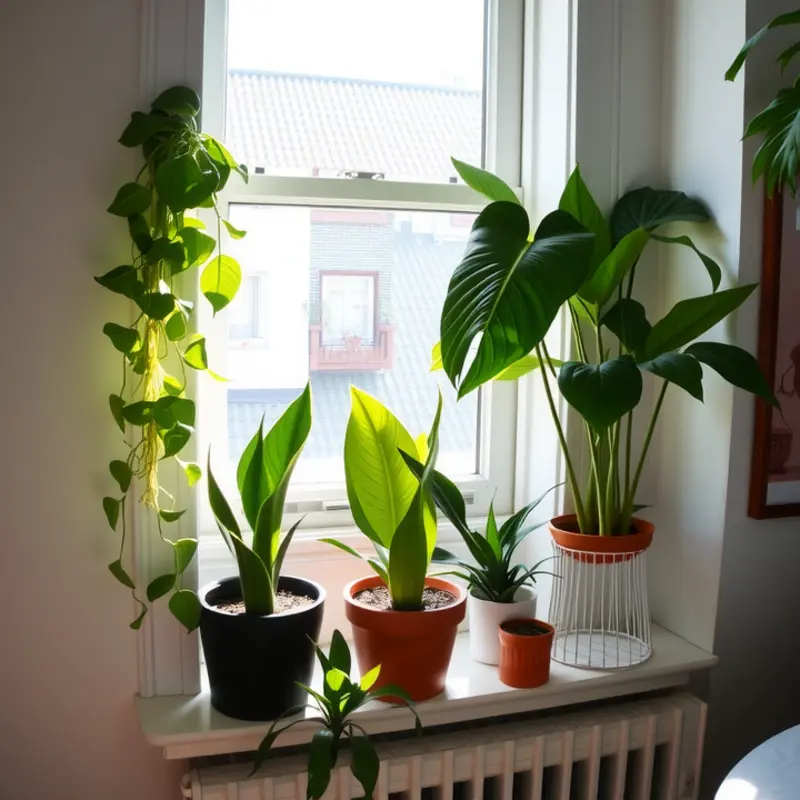
Navigating the world of indoor plants can feel like a jungle, especially when you’re limited on space. When selecting the right foliage for your apartment, the first consideration should always be the amount of light your space receives. Bright, indirect light is ideal for most houseplants, but many options thrive in low-light conditions, perfect for apartments with limited windows. For instance, ferns and snake plants are excellent choices for dimly lit corners.
Next, evaluate the available space in your apartment. Large species like fiddle leaf figs demand significant room, both vertically and horizontally. Meanwhile, compact plants like succulents or air plants fit comfortably on shelves or windowsills, offering greenery without consuming too much precious square footage. Hanging planters can also be a savvy solution to add greenery without sacrificing floor space.
Maintenance level is another crucial factor. If your schedule is hectic, consider plants known for their low-maintenance requirements. The pothos is a favorite ‘set it and forget it’ option, requiring minimal water. On the other hand, delicate orchids or ferns need more attention, with specific watering and humidity needs, making them suitable for homebodies eager to invest time in plant care.
Your lifestyle will also influence the plants you choose to bring into your home. If you share your apartment with furry friends, prioritize pet-friendly plants, avoiding those that are toxic if ingested. Pet-safe options include herbs like basil and rosemary, which not only add greenery but can also be a culinary delight. The apartment-friendly pet furniture guide might provide further inspiration on how to harmonize your pet’s space with your indoor garden.
Finally, choose plants that reflect your personal style and vibe. If you lean towards a minimalist aesthetic, consider plants with simple, clean lines like a ZZ plant or monstera. Meanwhile, for a bohemian or eclectic feel, mix a variety of species with different textures and colors. A well-chosen plant can be a statement piece as much as a chic piece of furniture or artwork.
By considering these factors—light, space, maintenance, lifestyle, and style—your apartment can effortlessly transform into a lush indoor oasis, bringing both beauty and tranquility to your living environment.
Plant Care Essentials: Easy Steps for Thriving Greens
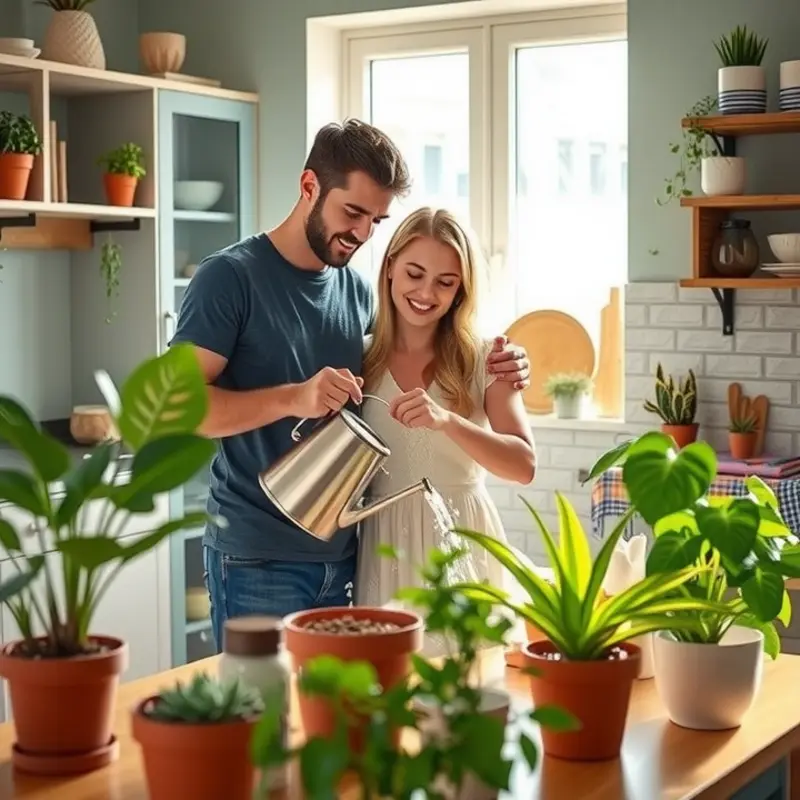
Welcoming plants into your home is just the start. Now you must ensure they thrive in your space. Channeling your inner plant whisperer requires understanding the essentials: watering, fertilizing, and lighting.
Watering is the art of balance. Overwatering is a common mistake, so understanding your plant’s hydration needs is crucial. Most houseplants prefer their top inch of soil to dry out before the next soak. Feel the soil with your finger—it’s like shaking hands with your plant to check how it’s doing. In small spaces, consider using ice cubes as a slow-release watering method. Place a few cubes on the soil surface; as they melt, they’ll hydrate your plant gradually, reducing the risk of waterlogging.
Fertilizing your plants involves providing the right nutrients to encourage growth. A general rule is to fertilize during the growing seasons of spring and summer. Many plants don’t need extra nutrients during their dormant winter period. Use a balanced fertilizer and dilute it more than the package suggests, especially in small spaces where over-fertilization can upset the delicate balance of your indoor ecosystem.
Lighting can be tricky in apartments with variable natural light. Each plant has its own lighting preference. Some flourish under bright, direct light while others thrive in dim corners. A great way to gauge your plant’s light needs is to observe its leaves—pale, yellowing leaves often indicate too little light, while scorched leaf edges might mean the light is too intense.
Learning to read these signals is key. Droopy leaves often mean a thirsty plant, while brown leaf edges can signal overwatering or low humidity. Always keep an eye on new growth—it’s your plant’s way of saying “I’m happy here!”
For those who enjoy urban gardening, the blog post Apartment Cleaning Schedule provides useful insights to keep your space tidy while nurturing your green home companions. Establishing a regular maintenance routine can make plant care feel less like a task and more like a rewarding practice.
Remember, each plant is unique, just like us. Get to know them as individuals, and soon enough, they’ll be as much a part of your home as you are. Caring for your plants doesn’t have to be a chore; embrace the process and watch your indoor garden flourish.
Final words
Congratulations! You’re now equipped with the essentials to create a flourishing green retreat in your apartment. Whether you chose to indulge in vibrant leafy wonders or nurtured a few prickly cacti, each plant tells a story. They’re not just decoration; they’re part of your living space and experience. So, when you invite friends over, they won’t just admire your color-coordinated throw pillows—they’ll be amazed by the mini rainforest you’ve cultivated. Go ahead, make your apartment a breath of fresh air, literally! Who knew apartment living could be this alive and vibrant? Now, how about channeling that green thumb into a small herb garden? Can you say DIY pasta night? Yum!

